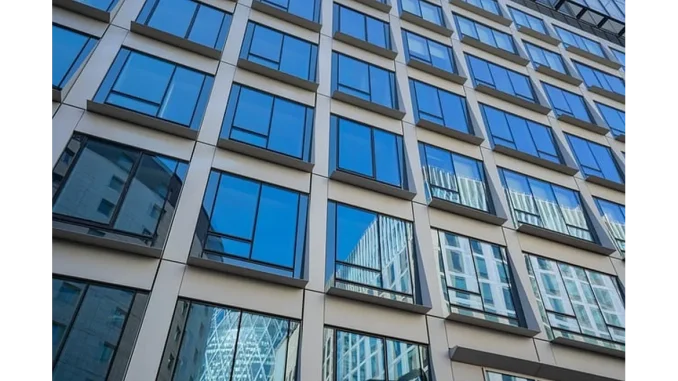
In an era where sustainability and environmental responsibility are paramount, green certification initiatives such as LEED (Leadership in Energy and Environmental Design) have become increasingly influential. Developed by the U.S. Green Building Council (USGBC), the LEED rating system stands as the benchmark for assessing a building’s environmental performance. This article delves into the intricacies of the LEED rating system, its various categories, the process for obtaining certification, and its significance for property owners.
LEED, an acronym for ‘Leadership in Energy and Environmental Design,’ is a globally recognised certification programme for green buildings. It provides a comprehensive framework for constructing and maintaining efficient, cost-effective, and environmentally friendly buildings. The system evaluates buildings on multiple criteria, including energy efficiency, water conservation, and indoor air quality, thus setting a global standard for green building practices used in over 160 countries.
The LEED rating system operates on a point-based structure, where buildings accumulate points by satisfying specific sustainability criteria. These points determine the building’s certification level, which ranges from Certified (40-49 points) and Silver (50-59 points) to Gold (60-79 points) and Platinum (80+ points). To achieve LEED certification, a building must undergo a rigorous review process managed by Green Business Certification Inc. (GBCI), which entails pre-certification, construction, and post-construction evaluations. Buildings are required to meet minimum standards in various categories and accrue a certain number of points to earn their certification.
LEED offers a variety of rating systems tailored to different project types. For instance, Building Design and Construction (BD+C) applies to new constructions and major renovations, while Interior Design and Construction (ID+C) pertains to interior fit-outs for commercial spaces. Building Operations and Maintenance (O+M) targets existing structures undergoing upgrades, and Neighborhood Development (ND) focuses on the sustainability of entire communities. Additionally, LEED for Homes addresses residential properties, while LEED Zero caters to projects aiming for net-zero energy, waste, water, or carbon footprints. Recertification options are available to help previously certified buildings maintain and enhance their sustainability over time.
Earning a LEED rating involves several key steps. First, the appropriate LEED rating system must be selected based on the project’s characteristics. Next, the project must be registered, detailing its location, size, and intended green strategies. Sustainable materials and technologies are then incorporated during the design and construction phases to ensure compliance with LEED standards. An independent verification process follows, during which a LEED-accredited professional reviews the building’s design, conducts on-site inspections, and evaluates its performance. Finally, the building is submitted for certification, where it is awarded points and assigned a certification level based on its adherence to LEED criteria.
The LEED rating system offers numerous benefits for building owners. One of the primary advantages is cost savings, as LEED-certified buildings typically have lower energy and water consumption, resulting in reduced operating expenses. Furthermore, LEED certification promotes healthier indoor environments through improved air quality, lighting, and acoustics, which can enhance occupant well-being and productivity. From a market perspective, LEED-certified buildings often command higher property values, attract environmentally conscious tenants, and enjoy better rental rates. Compliance with LEED standards also helps building owners meet regulatory requirements and can make the property more appealing to investors.
A LEED rating remains valid for five years, after which the building must undergo a recertification process to maintain its status. This ensures continued high performance and adaptation to new technologies and best practices. The cost of LEED certification varies depending on the project’s rating system and size, with standard fees including a registration fee and a per-building fee. For example, Silver, Gold, and Platinum USGBC members face a registration fee of $1,350 and a flat fee of $4,500 per building, whereas non-members or organisational level members pay $1,700 and $5,600, respectively.
Improving a building’s LEED rating can be achieved through several strategies. Enhancing energy efficiency is crucial and can be accomplished by implementing energy-efficient lighting, upgrading HVAC systems, and installing energy-efficient appliances. Water efficiency can be improved by using low-flow fixtures, rainwater harvesting systems, and xeriscaping. Indoor environmental quality can be bolstered by providing natural daylight, improving ventilation, and ensuring effective temperature and humidity control. Utilising sustainable building materials and incorporating innovative design features such as green roofs and solar panels also contribute to higher LEED ratings. Building analytics tools can play a significant role by providing real-time data on energy consumption, HVAC systems, lighting, and water usage, enabling building owners to identify areas for improvement and optimise performance.
The LEED rating system offers precertification for new construction projects under the LEED for Core & Shell (LEED-CS) category. This proactive approach allows project teams to showcase their commitment to sustainable design and construction practices before the building is completed, enhancing marketability and attracting potential tenants and financiers.
In summary, the LEED rating system is a comprehensive and globally recognised framework for evaluating the environmental performance of buildings. By understanding and implementing LEED principles, building owners can create healthier, more efficient, and sustainable structures that benefit both the environment and their financial bottom line. As the world moves towards greater sustainability, LEED certification will continue to play a vital role in promoting green building practices and advancing the construction industry’s environmental standards.


Be the first to comment